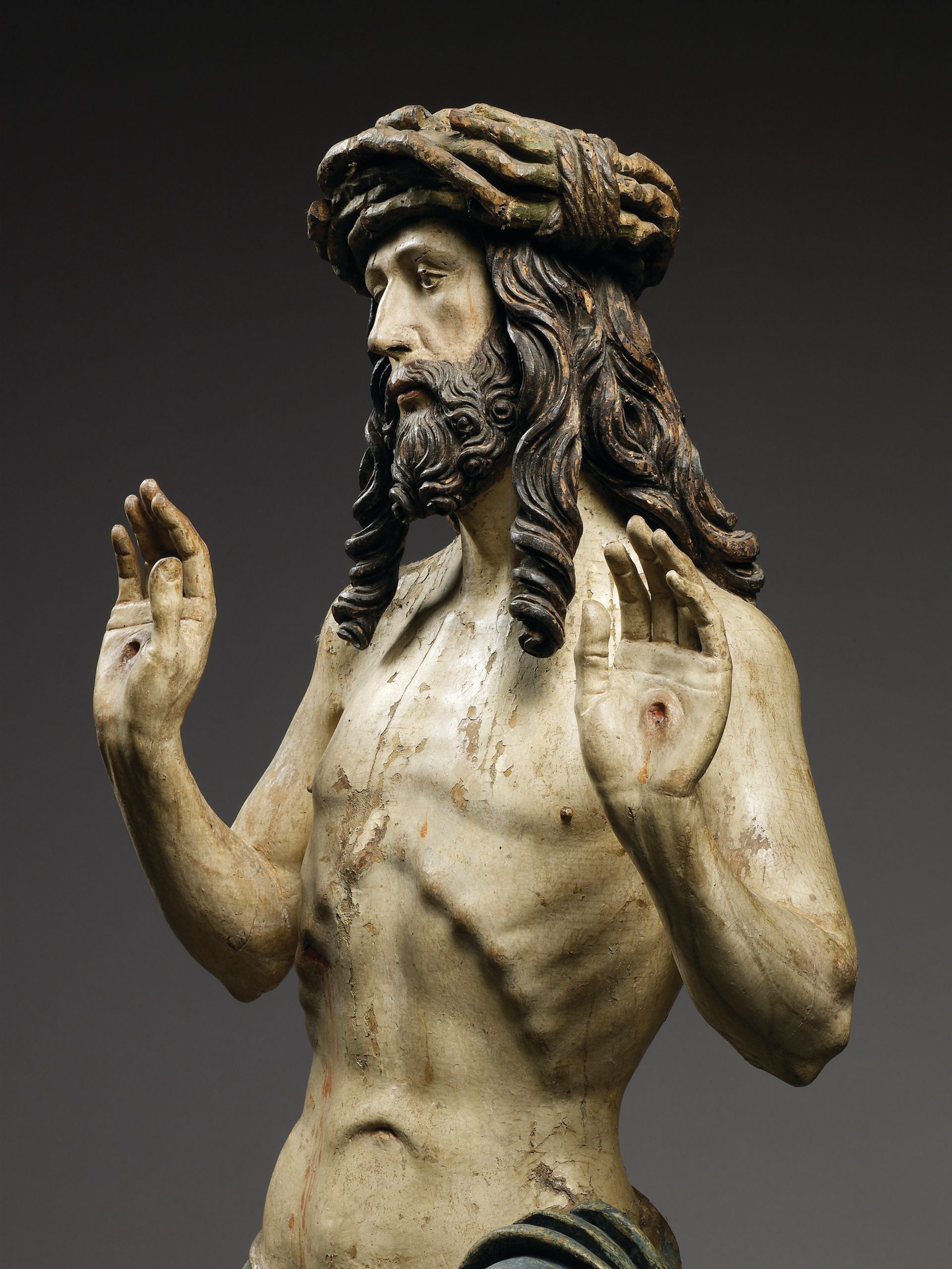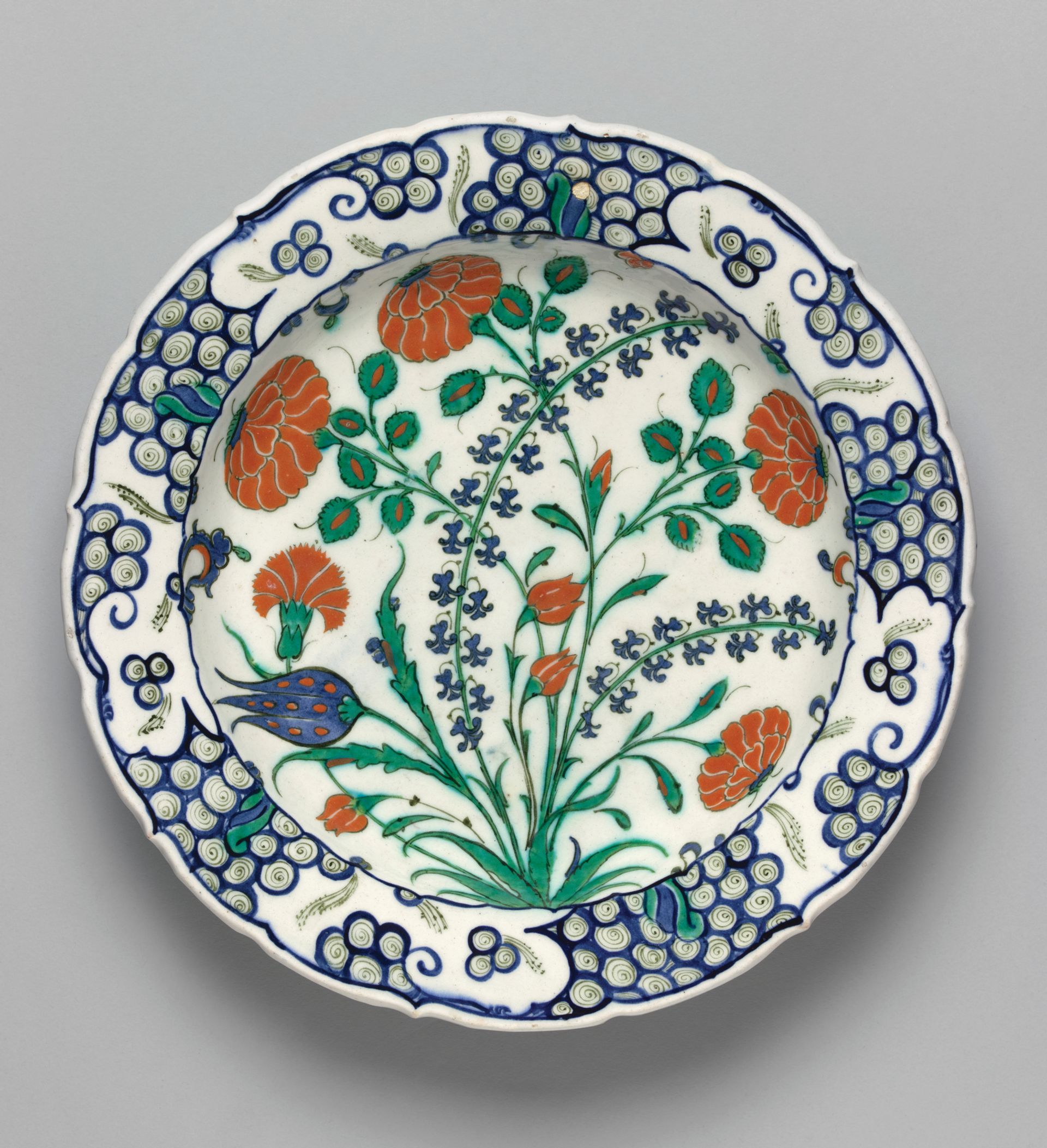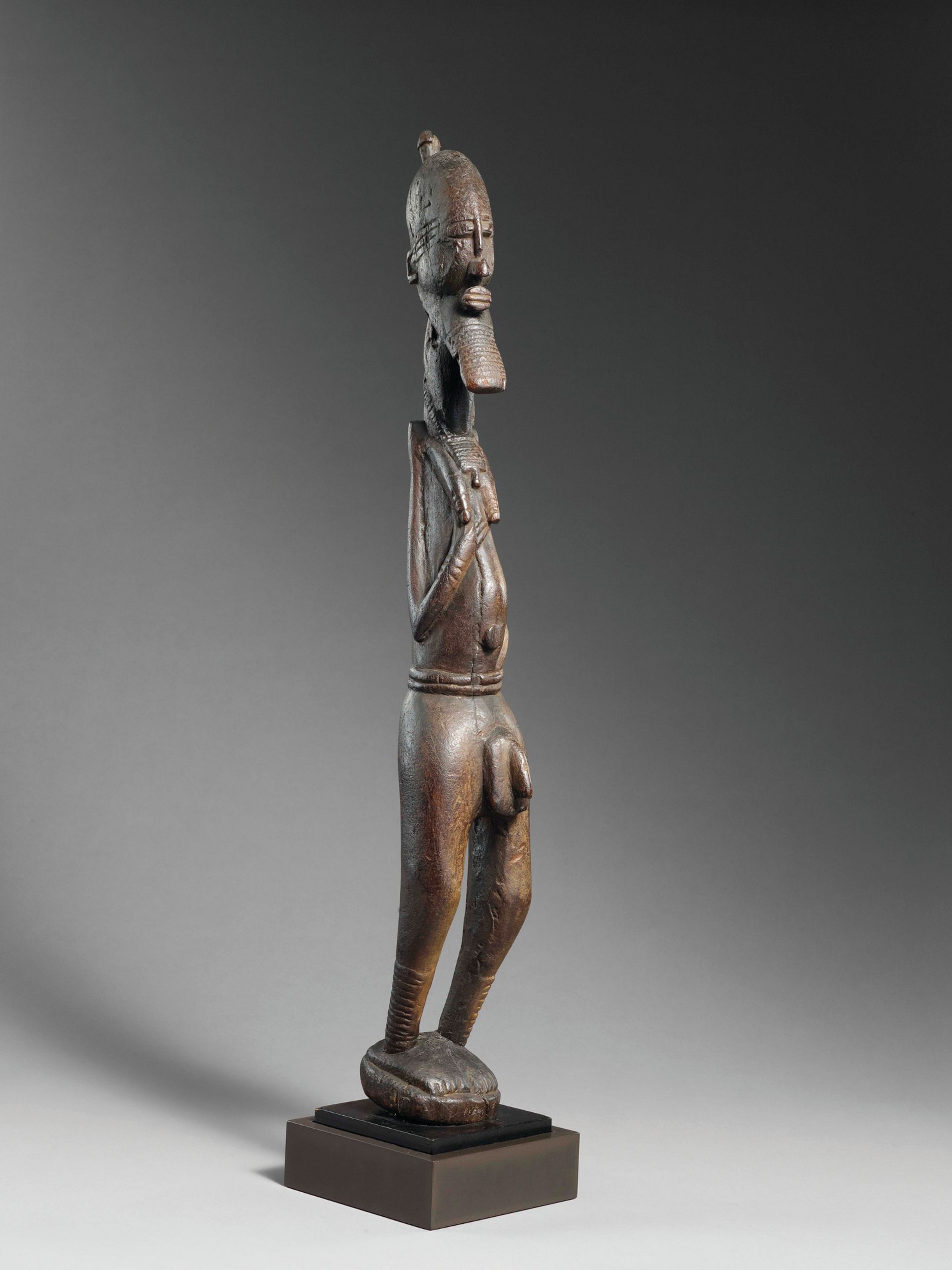Since the announcement in 2006 that a cultural district was to be created on Saadiyat Island off Abu Dhabi in the United Arab Emirates (UAE), ten years have passed and the conventional art museum sought by the Emiratis has turned into a universal institution as a result of influence almost exclusively from the French side. Although the term “universal museum” is a venerable one, anchored firmly in the history of European philosophy, it offers the capital of the emirates something quite original today. At the start of the 21st century, the concept behind this new Louvre is shaking up the conventional relationship between thinking and museums.
In July 2006, when the Saadiyat cultural district was announced to the press as an urban planning project centred on a performing arts hub and four museums, the Louvre’s name was not yet involved, unlike the Guggenheim’s, which was then the main focus of interest. At that point, all that was on the cards was a conventional art museum entrusted to the architect Jean Nouvel. However, talks with the Louvre had begun a year earlier, in 2005, a few months before Thomas Krens, the flamboyant director of the Guggenheim Foundation, was contacted.
It was due to a desire to associate the emirate’s name with that of the famous French institution that the project was created in 2004 by the sons of Sheikh Zayed bin Sultan Al Nahyan. That year was marked by the death of their father, Abu Dhabi’s ruler since 1966 and the driving force behind the 1971 unification of the emirates that make up the UAE. The dynastic transition that had begun in 1990 came to an end and the Louvre Abu Dhabi was the most resounding cultural expression of the new distribution of power in the emirate.
The future museum was thus born of a request from Abu Dhabi rather than an outside proposal deriving from the economic globalisation of museums, as the later involvement of the Guggenheim Foundation might appear to suggest. The museological specifications of the Louvre Abu Dhabi project were then defined in Paris, which has also led on the choice of its content.

The word “universalism” started to be associated with the project in 2005 on the initiative of the Louvre’s then director, Henri Loyrette. There were two considerations behind this shift from the conventional art museum requested by the Emiratis to a universal one desired by the French. First, it allowed the collection’s range to extend beyond historic European art and involve other institutions, such as the Centre Pompidou for recent art and the Musée du Quai Branly for non-Western artefacts. This meant that the pressure on the Louvre to provide loans for the entire length of the 30-year contract could be shared between ten museums.
The second reason emerges from the Declaration on the Importance and Value of Universal Museums. In 2002, Loyrette was one of the 18 signatories of this text. Also signed by his counterparts at the biggest museums on both sides of the Atlantic and in Russia, from the Metropolitan Museum in New York to the Hermitage in St Petersburg, and with the backing of the British Museum, the declaration aimed to provide a response to restitution claims for works of art and antiquities taken from Greece and former colonies. The declaration stated that the items in these Western institutions belonged to humanity as a whole; there was thus no need for modern states to contest their ownership.
This argument lacked both a legal and symbolic basis; it was formulated outside any international organisation and without the approval of museums in the rest of the world. The Abu Dhabi request, however, came at just the right moment to remedy this situation. By endorsing the concept of the universal museum and providing a place where French collections could be displayed in the Middle East at the emirate’s expense, Abu Dhabi helped the Louvre legitimise the 2002 declaration. It was not only the Louvre brand that was being traded in the Abu Dhabi agreement, but also the name of a sovereign political entity outside the West.
Added to these technical reasons was the widespread view in France that the Louvre was the incarnation of the philosophical revolution of the Age of Enlightenment, a phrase coined by Immanuel Kant, the great philosopher of universalism in the modern history of ideas. In a speech on 15 October 2011 at the start of the second Louvre Abu Dhabi study day in Paris, Loyrette echoed this, “What does a universal museum of today look like?” he asked. “At the start of the 21st century, how should we renew the promises made by the Revolution and the Empire? How to think about them after the more than two centuries that have brought about a completely different context?”
Finding the answers to these questions was the task for the French curators charged with bringing the new museum into existence. What meaning does a universal museum brimming with anti-religious and anti-monarchist revolutionary history have in 21st-century Abu Dhabi, with its monarchy that rapidly positioned itself in the counter-revolutionary camp after the Arab Spring of 2011?
The grand narrative

The Agence France-Muséums (AFM), a service company monitored by the French Ministry of Culture, was created just after the intergovernmental agreement of 6 March 2007 to establish the Louvre Abu Dhabi in order to implement its directives. Divided into two teams—one administrative, the other scholarly—it entrusted the writing of the future museum’s grand narrative and the formation of its collection to a team of state curators. Since 2007, these civil servants (who are all French) have been under the leadership of two curatorial directors, Laurence Des Cars, who was in the role from 2007 to 2013, and Jean-François Charnier, who took over from her.
Under Des Cars’s guidance, the AFM developed an approach to the concept of universalism that could be described as historical. This consisted of extending the Louvre’s remit into the modern period, while making it more truly universal, both in the age and the origin of the collections. For after a period in the 19th century when it extended its range in all directions, thanks to the French Revolution preying on the Church’s possessions, the Napoleonic wars in Europe and colonial expansion on other continents, the Louvre had drawn in on itself in the second half of the 20th century, giving large parts of its collections to other Paris museums. Today, the Louvre does not cover prehistory, nor any of the ancient world beyond an expanded Mediterranean area that includes Persia, and its art history stops in 1848. For the preceding periods, you have to turn to the Musée d’Archéologie Nationale in Saint-Germain-en-Laye and, for the recent periods, the Musée d’Orsay, then the Centre Pompidou. And yet these establishments are all partners in the Louvre Abu Dhabi project through the AFM. As for geographic areas, while in 2000 the Louvre made space for art from Africa, Asia, Oceania and the Americas in the Pavillon des Sessions, and in 2003 created a new department for so-called “Islamic” art, Asia—from Afghanistan to Japan via non-Muslim India and China—is still conspicuously absent. Yet the Musée Guimet, to which the Louvre’s Asian collections were transferred in 1945, is one of the AFM’s main partners; it is even one of its shareholders.
Budget limitations and the availability of works of art tempered this aim to cover the entirety of historic time and space, but narrative constraints also helped define the three priorities set by the curatorial team under Des Cars: Western Christianity, the Muslim world and Asia.
Crossroads of civilisations When questioned in 2008, Des Cars also called them “threads of civilisation”. Following these threads, the Islamic world conveniently found itself at the “crossroads of civilisations”, another expression then central to the scholarly project. This approach also allowed for the “decentred” gaze that the new global history called for and which the French team looked to adopt. The rest of the world, comprising tropical Africa, Latin America and Oceania, was thus pushed into second place to be looked at from the point of view of colonial conquests, again taking a historical approach to art.
This museological narrative also fitted in with, and was partly inspired by, the great political narrative of “cultural dialogue” so dear to the then president, Jacques Chirac, who between 2005 and 2007 played a decisive role in the project, which had been welcomed by the civil servants administering French state museums, despite the fact that their senior curators were initially unconvinced. The phrase “cultural dialogue” came up repeatedly in Chirac’s foreign policy speeches, a response to the “clash of civilisations” embodied by 9/11 but also by the British-American invasion of Iraq.
And yet, according to the American political theorist Samuel Huntington, who propagated the latter idea, the civilisations where the clashes occur are precisely the three main blocks that Des Cars’s scheme hoped to show in dialogue over the centuries. Without fully disappearing, this historical approach to universalism was progressively supplanted by an anthropological one endorsed by Charnier from his arrival at the AFM in 2008, and it was imposed from 2013, the year when the leadership changed both at the AFM and at the Louvre in Paris, when Jean-Luc Martinez became its director.
Charnier and Des Cars are both state curators who trained in France in art history and archaeology. But their scholarly paths had since diverged. While Des Cars is an art historian specialising in French paintings of the end of the 19th century, Charnier specialises in archaeology and prehistory. Des Cars arrived at the AFM from the Musée d’Orsay in 2007, while Charnier came via two ethnographic museums: the Musée Nationale des Arts et Traditions Populaires and the Museum of European and Mediterranean Civilisations in Marseille, where art history gives way to anthropology.

With the anthropological approach, it is no longer a question of embracing the whole world in a classification system that is essentially European. The close tie between the universal museum and the Enlightenment is loosened and France and its Revolution are no longer major points of reference. Now, something becomes universal not because it follows the dictates of human reason, as Kant affirms, but because it transcends cultural boundaries and is common to all mankind; universalism is what has always been—not what will be, such as the reign of political freedom and equality. The anthropological approach clears the universal museum of “promises made by the Revolution and Empire”, to quote Loyrette, to replace them with a meaning that is revolutionary in its own way.
When humans create works of art to distinguish themselves, as a community or as an individual, this artistic creation is full of similarities that reflect the universality of man through the ages and across the seas. That is Charnier’s anthropological starting point and one that the Louvre Abu Dhabi aims to portray. However, this approach does not mean plunging into a world of mere forms, severing the link between learning and the museum. On the contrary—and this is its great originality—it is quite unlike what you see at the Barnes Foundation in Philadelphia, where, because they both have beautiful curves, Renoir nudes hang with medieval ironwork that in no way provided inspiration to the French painter.
The AFM’s philosophy is to make the Louvre Abu Dhabi a place where hypotheses are formulated and research takes place to test them. It is not a stage for poetry, however beautiful, on which to dance with abandon. It is a museum for a time of doubt, a time of post-Cold War globalisation. But it will not drive reason from the museum.

